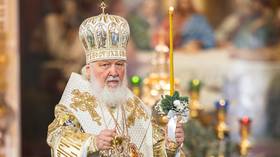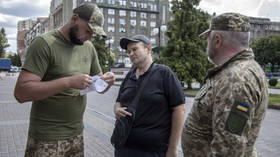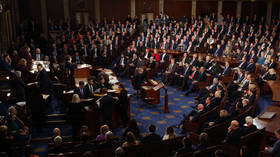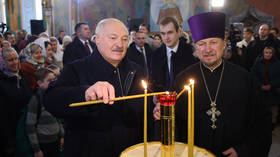Is Hillary really the nominee? All your primary questions answered
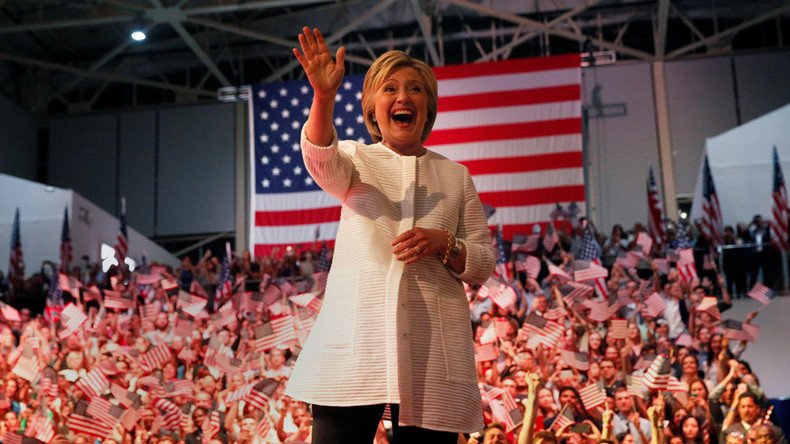
The US presidential primary cycle has, for all intents and purposes, drawn to a close after Hillary Clinton appears to have secured the Democratic nomination. But questions about what happened in the waning weeks remaining.
Clinton was all but declared the presumptive Democratic nominee on Tuesday after winning three of the day’s six primaries and picking up 372 pledged delegates, bringing her total to 2,184. Combined with the claimed support of 571 superdelegates, she would pass the magic number of 2,382 required.
BREAKING: Hillary Clinton secures delegates to become presumptive Democratic nomineehttps://t.co/C1a5xgCGrVpic.twitter.com/G0Sg9FTpNV
— RT America (@RT_America) June 7, 2016
Donald Trump became the presumptive Republican nominee almost two weeks prior, on May 26. With no other candidates remaining in the GOP race and several primaries left to go, Trump gained one vote more than the necessary 1,237 pledged votes after several unbound delegates said they would support him at the convention.
#Trump reaches magic number of delegates, officially presumptive GOP nominee https://t.co/EecZGQAX6rpic.twitter.com/vQ7F2wUkOS
— RT America (@RT_America) May 26, 2016
Even for Americans, the primary process can be confusing, with very specific terms not used in everyday language or even everyday politics.
What is a presumptive nominee?
And why are people referring to Clinton and Trump as such? Well, their delegate counts don’t become official until the party conventions in July. That’s when the delegates will actually vote for them ‒ the primaries and caucuses that spanned from Iowa in early February to Washington, DC on June 14 will basically just tell the delegates who to vote for.
Once Trump is officially nominated in Cleveland, Ohio, and Clinton in Philadelphia, Pennsylvania, then we can call them their parties’ nominees.
Delegates vs. superdelegates
There’s been a huge brouhaha, especially coming from Bernie Sanders’ campaign, about the role of superdelegates. It’s been especially confusing because many media outlets don’t note the difference between delegates and superdelegates in their counts. On top of that, superdelegates are a purely Democratic construct ‒ the GOP has no such position. Kind of.
So what's the difference? Delegates are based on the outcome of their state’s primary or caucus. For the Dems, they are all awarded proportionally, and are bound to a specific candidate. Clinton leads Sanders by 2,184 to 1,804 in these.
Superdelegates are the 719 party members, including current and former state and federal officeholders, who get to vote at the Democratic National Convention (DNC) and may vote however they choose. They often announce which candidate they support long before the nominating convention, so they are often counted in the delegate totals. Clinton leads Sanders by a whopping 571 to 48 in promises of support from superdelegates.
Sanders’ road to the nomination just got sharply steeper on Tuesday, but he technically still remains in the race. His argument is that superdelegates can switch sides until they vote at the convention. But he also may be refusing to concede in the hopes of winning concessions in the party platform when it is created in Philadelphia in July. It's a good bet, however, that former President Bill Clinton, a superdelegate, isn't going to change his mind about voting for his wife between now and then, for example.
The Republicans have their own confusing terms and rules when it comes to delegates. First, some states award delegates proportionally, while others are winner-takes-all. Then there are bound and unbound delegates. Bound means that the delegate is required to vote for a certain candidate, but only for a specific number of ballots at the Republican National Convention (RNC).
“There are 50 states,” Bill Crocker, Republican national committeeman for Texas, told the National Review in 2012. “And so there are probably 53 answers” as to what delegates’ voting responsibilities entail.
Unbound delegates are kind of akin to a superdelegate, but they are beholden to their states’ rules and laws. Until Trump amassed the required number of delegates, his former rivals ‒ including those who had suspended their campaigns ‒ refused to release their bound delegates to vote for the presumptive nominee. In this way, they hoped to prevent Trump from crossing that threshold and being nominated on the first ballot so they could try to mount an attack on him in later ballots.
What will happen at the conventions
Okay, so there will be the ballots and the unbound or superdelegates at the conventions that are going to last for four days each ‒ July 18-21 for the RNC and July 25-28 for the DNC, which by tradition gets to go second as the White House incumbent party. Will there be lots of craziness and backstabbing? What else will happen?
Gratitude and grief pours into #ThankYouBernie hashtag as Sanders vows to keep fighting https://t.co/qQNWhw6JNIpic.twitter.com/7GMh60K7E9
— RT America (@RT_America) June 8, 2016
Supporters of Sanders and the former Republican candidates likely won’t stage a mutiny ‒ called a brokered convention, where, basically all hell breaks loose ‒ at their respective conventions. If it does, though, it’s more likely to happen at the DNC because the senator from Vermont has said he will continue to fight until then. Both Clinton and Trump appear to have secured the requisite number of votes to win on the first ballot. But lots of other things occur at the quadrennial events.
While we will likely know who the two presumptive nominees have tapped to join their tickets before the conventions, it’s there that the vice presidential candidates will officially be unveiled, with lots of pomp and circumstance. Not as much as when the presidential candidates are officially nominated (after those pesky ballots are counted), of course. Those events happen on the fourth night.
During the days, the parties conduct the business of creating their platforms, meaning their stated policy goals and proposals ‒ or planks ‒ for the upcoming election. These planks are generally pretty broad, but can be targeted more narrowly to appeal to various interests within the party. It’s likely that Sanders will try to make the Democrats’ platform more progressive and liberal than it has been in previous election cycles, based on his broad support with younger voters. There will also be lots of remarks by lesser party figures. In the evenings, more important or up-and-coming party members will make their speeches.




